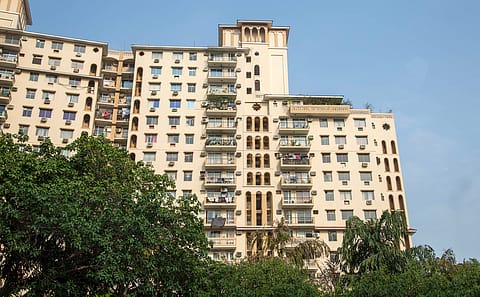As Q3 shows mixed results, here's why Q4 could be a make-or-break quarter for India’s real estate market
Q4 2025 is set to be a decisive period for India's real estate market, with opportunities from festive demand and policy tailwinds. Yet, challenges such as affordability and premium inventory absorption remain.

Q4 2025 (October-December) is poised for robust activity in real estate, driven by seasonal demand, stable financing, and policy support, but navigating affordability and premium inventory absorption will be key to sustaining growth for companies, which will make this quarter a true test of the market’s resilience as it heads into 2026, the latest report by online real estate platform PropTiger said.
The company's residential market report, RealInsight for Q3 2025, said that as the residential market enters the final quarter of 2025, the outlook is one of cautious optimism, shaped by festive demand, supportive policies, and evolving market dynamics.
It believes Q4 will be critical in setting the tone for 2026. Opportunities present before companies to boost sales in this quarter are: the festive season, policy tailwinds from Q3, including GST cuts on cement and construction materials, which may translate into competitive pricing; and stable interest rates and strong domestic and foreign capital inflows, which will further support home loan affordability and project launches.
In terms of challenges, the affordability pressures remain in the mid and affordable segments, says the report, adding that rising property prices have stretched many budgets. "Premium segment absorption is under scrutiny; a large pipeline of luxury projects and growing unsold inventory may trigger localised price corrections if sales momentum slows."
Across India’s top eight cities, the residential market showed a mixed performance in Q3 2025, as the new housing supply stood at 91,807 units, marking a 9.1% quarter-on-quarter rise from 84,138 units in Q2 2025, but a flat market on a year-on-year basis at a decline of just 0.1%, indicating a largely stable supply level compared to the same period last year.
India's real estate market continues to be affected due to global headwinds, including trade uncertainties, tariff adjustments, and shifting outsourcing dynamics, which continue to temper sentiment, while its fundamentals remain strong. The Mumbai Metropolitan Region (MMR) was the largest contributor, accounting for 26.9% of all new launches, followed by Pune with 18.7% and Hyderabad with 13.6%. These three cities collectively represented 59.2% of the new inventory introduced during Q3.
The residential sales activity in Q3 2025 also reflected a market in a phase of stabilisation as a total of 95,547 units were sold across the top eight cities, a marginal decline of 2.2% QoQ and 1.0% YoY. While the volume plateaued after a sustained period of growth, the aggregate value of homes sold in Q3 2025 surged by 14% YoY to reach Rs 1.52 lakh crore, reflecting increasing preference for higher-value homes. This divergence between volume and value underscores the market's premiumisation, where fewer but more expensive homes are driving overall market growth.
Recommended Stories
In terms of unsold inventory, the report says it remained robust in Q3 2025 across the top eight cities, growing by 4% YoY to 5.06 lakh units as the sales velocity kept pace, resulting in a stable inventory overhang. The Quarters-to-Sell (QTS)—a key metric representing the time it would take to sell the current unsold stock at the prevailing sales rate—stood at 5.8 quarters, or 17.4 months, well within the comfortable range of 18-24 months.